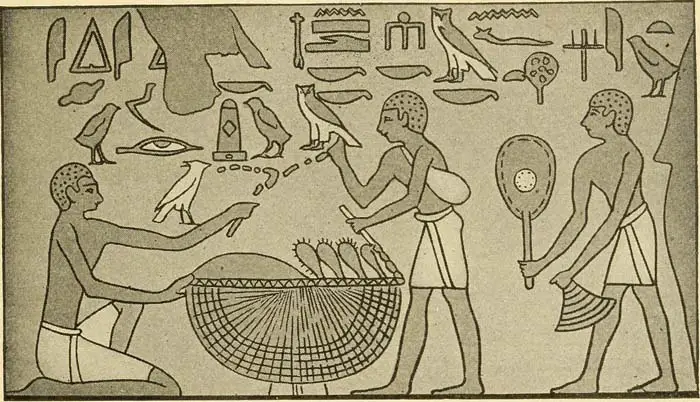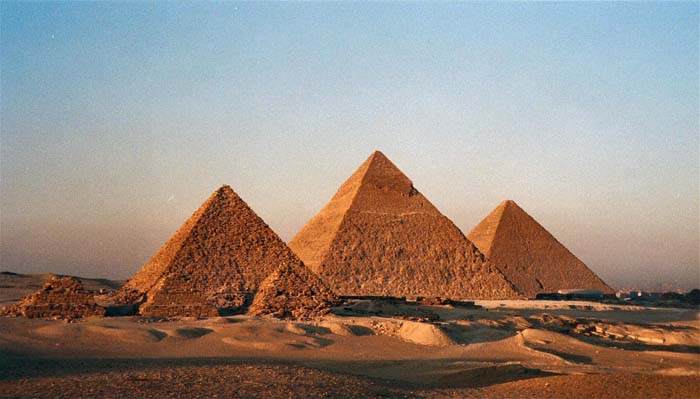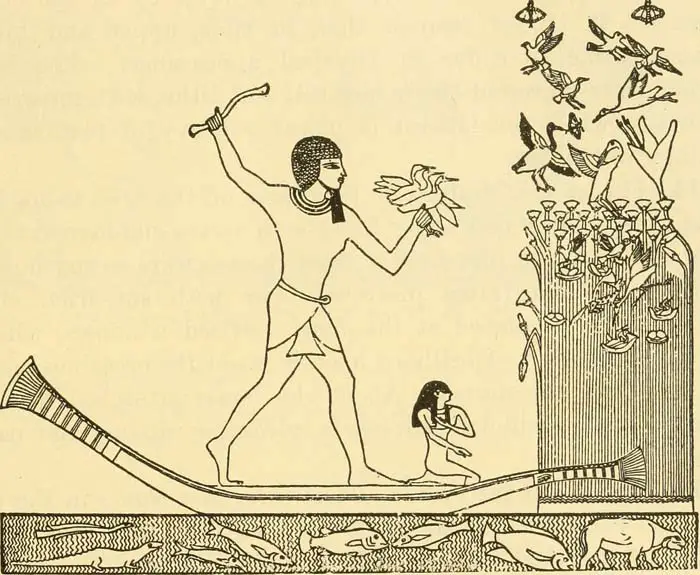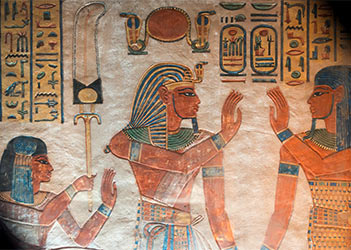History of Ancient Egypt’s Government
Before the Old Kingdom
Scholars have found few government records from before the Old Kingdom Period. Evidence shows that Egypt was a united kingdom with a single ruler, which indicates that the first pharaohs must have set up a form of central government and established an economic system.
Before the Persian Period, the Egyptian economy was a barter system and not monetary. People paid taxes to the government in the form of crops, livestock, jewelry or precious stones. In return, the government maintained peace in the land, saved food in case of famine and conducted public works.
 © Internet Archive Book Images – Barter trade system
© Internet Archive Book Images – Barter trade system
The Old Kingdom
Ancient Egypt’s government became more centralized during the Old Kingdom. Building large stone pyramids meant the pharaoh had to make changes to the government. Pharaohs from Dynasties Three and Four maintained a strong central government and they had almost absolute power.
Earlier pharaohs created a strong government that allowed them to summon large work forces. They appointed their high officials, and they chose members of their family. These men were loyal to the pharaoh. The government then let the pharaoh gather and distribute enough food to support huge numbers of workers, which allowed them to build large stone pyramids.
 © Bruno Girin – The famous pyramids at Giza
© Bruno Girin – The famous pyramids at Giza
During Dynasties Five and Six, the pharaoh’s power lessened. Government positions had become hereditary and the district governors, called nomarchs, grew powerful. By the end of the Old Kingdom, nomarchs were ruling their nomes (districts) without the oversight of the pharaoh. When the pharaohs lost control of the nomes, the central government collapsed.
The Intermediate Periods
Modern scholars place three Intermediate Periods into the timeline of Ancient Egypt’s history. The Old, Middle and New Kingdoms were each followed by an intermediate periods. All three of these had unique characteristics, but they have two common features. Each represents a time when Egypt was not unified, and there was no centralized government.
The Middle Kingdom
The Old Kingdom’s government served as a base for the Middle Kingdom’s. The pharaoh made changes, including the addition of more officials. Titles and duties were more specific which limited each official’s sphere of influence.
The central government became more involved in the nomes and had more control of individual people and what they paid in taxes. The pharaoh tried to limit the power of the nomarchs. He appointed officials to oversee their activity and he weakened the nomes by making towns the basic unit of the government. The mayors of individual towns became powerful.
The increase in government officials led to the growth of the middle-class bureaucracy.
Officials based taxes on an assessment of cultivable land and the flooding of the Nile. During periods of low flooding, officials reduced taxes, while the government levied a poll tax on each citizen, which they paid in produce or craft goods.
 © Internet Archive Book Images – People paid taxes in produce
© Internet Archive Book Images – People paid taxes in produce
The New Kingdom
The pharaohs of the New Kingdom continued to build their government on the foundations of earlier governments. One change they made was a decrease in the land area of nomes and an increase in their number. During this period, the pharaohs created a standing army and created military positions. Before this, the pharaohs formed armies using conscripted people.
The 19th Dynasty saw the beginning of a break-up in the legal system. Before this dynasty, government appointed judges made decisions based on evidence presented to them. During this period, however, people began obtaining verdicts from oracles. Priests read a list of suspects to the state god’s image, and the statue indicated the guilty party. This change represented an increase in the priesthood’s political power. It was open to corruption.
After the New Kingdom
During the Late Period, the pharaohs reunited Egypt and centralized the government. When Persia conquered Egypt, the new rulers established a monetary economy. The Persian monarchs made Egypt a satrapy, and appointed a governor to rule. The regional administrative system was kept in place. The Greek and Roman Empires later imposed their governmental systems on Egypt, also keeping some aspects of Egypt’s regional government.
















































